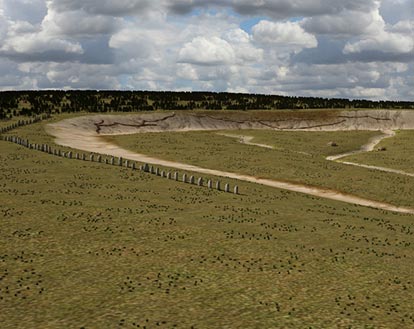With the help of ground-penetrating radar, researchers have discovered that there are 90 large stones, known as Durrington Walls, hidden underground in a village near the famous Stonehenge monument in England. Archaeologist Vince Gaffney and his team announced this discovery at the British Science Festival in Bradford, England earlier this month.
“Durrington Walls is about three kilometers (two miles) from Stonehenge. It was built around 4,600 years ago. Today it is ringed by a wide ditch — and outside of that, a raised earthen bank. Such a ditch-and-bank earthwork is called a henge. Durrington Walls covers an area five times the size of Stonehenge. Because of its size, researchers call Durrington Walls a “super-henge,” according to Student Science.
Gaffney and his team used ground-penetrating radar to look into the ground beneath super-henge without digging. The radar works by sending out electromagnetic radiation pulses toward the ground. The energy waves travel through the soil until they hit an object. Once the waves hit an object, they bounce off the object and return to the surface. This technology allows scientists to see what is underground without requiring any digging and allows them to produce maps of what is under the soil.
At Durrington Walls, researchers discovered many massive stones. “Some were up to 4.5 meters (about 15 feet) high. These stones were pushed over and covered by soil that was used to construct the earthen bank, Gaffney said. As many as 30 stones remain intact. Other stones are broken. Still others are missing,” Gaffney said. He also suggests ‘super-henge’ may be as old or even older than Stonehenge.
